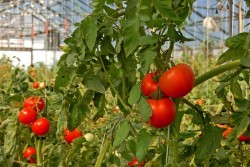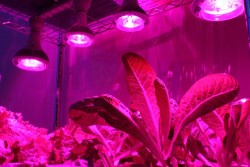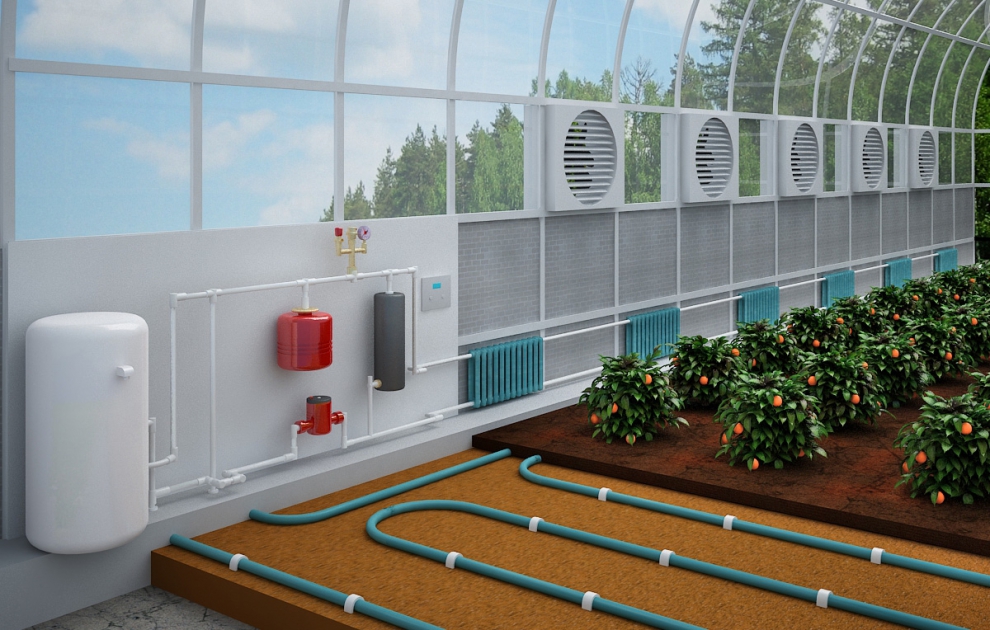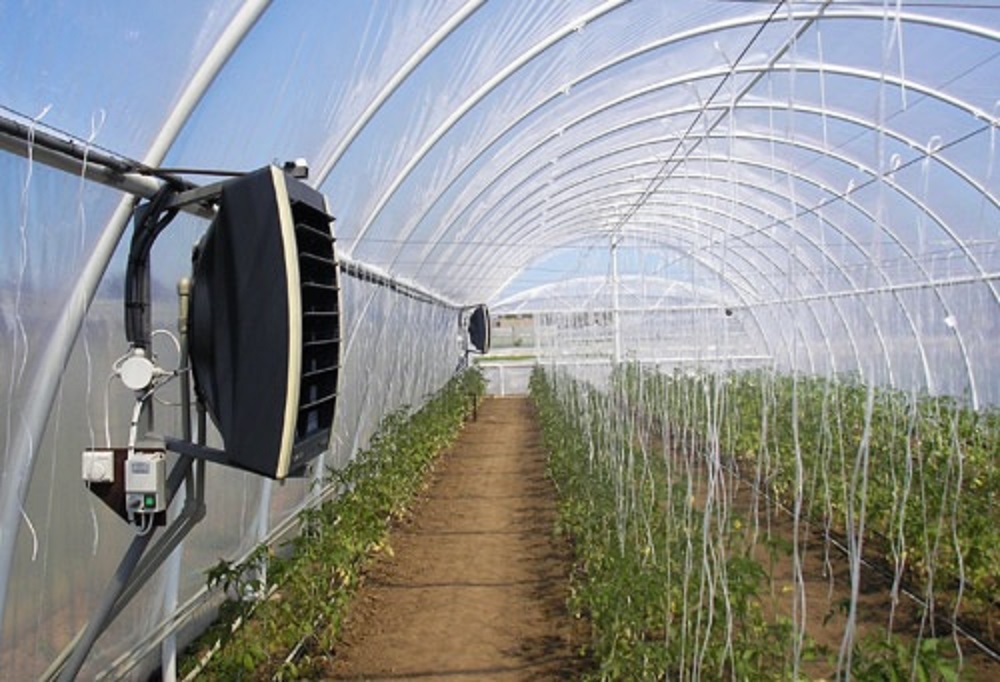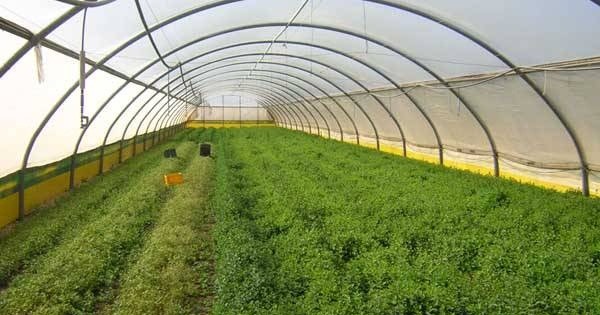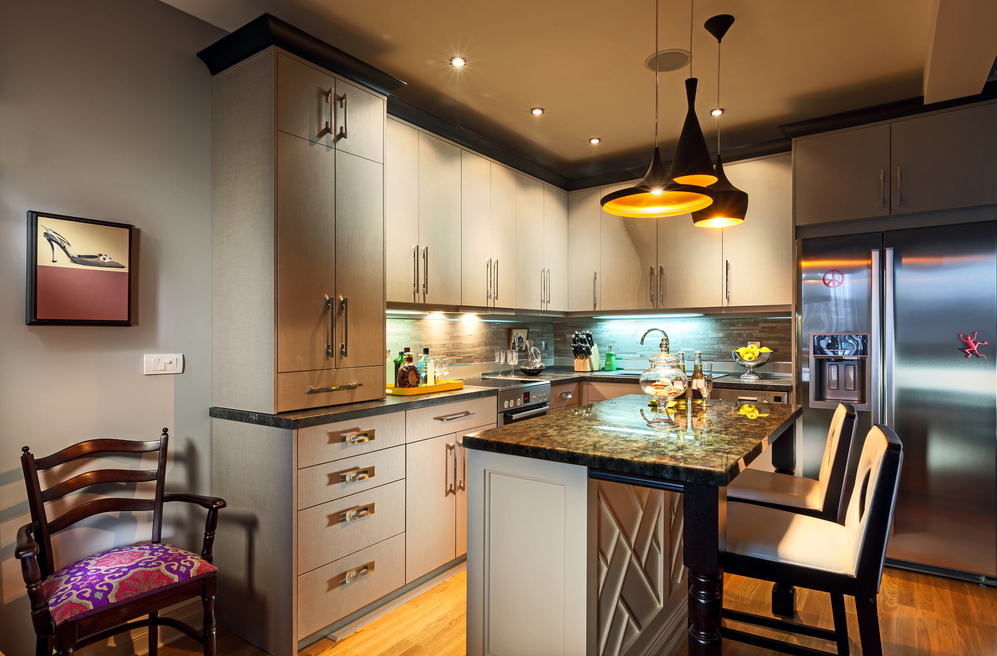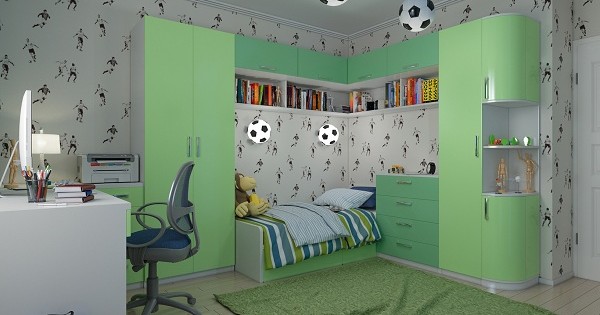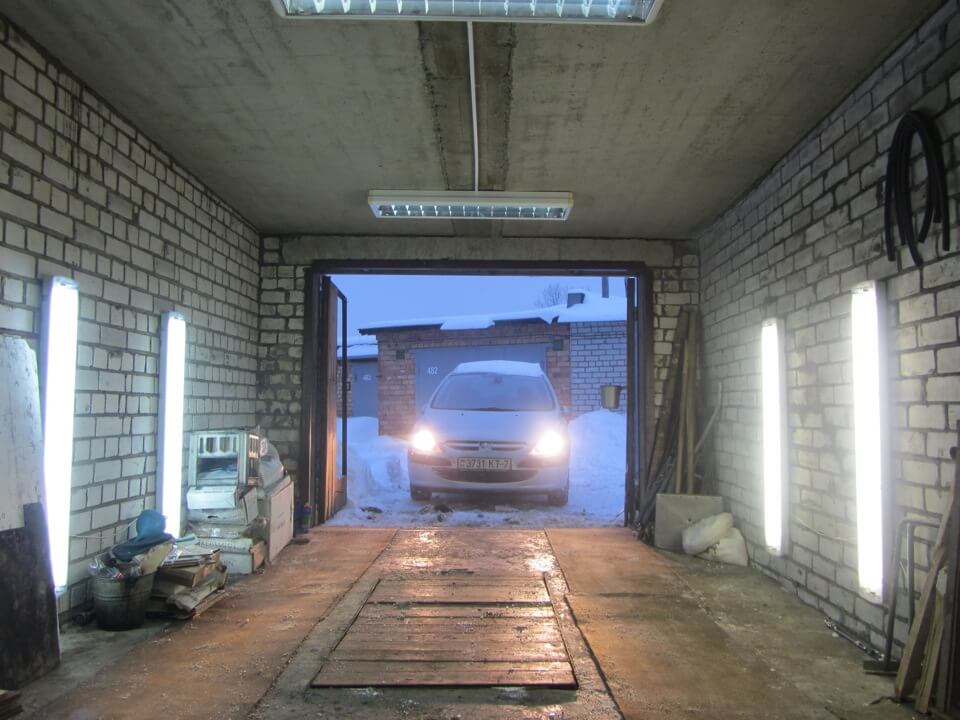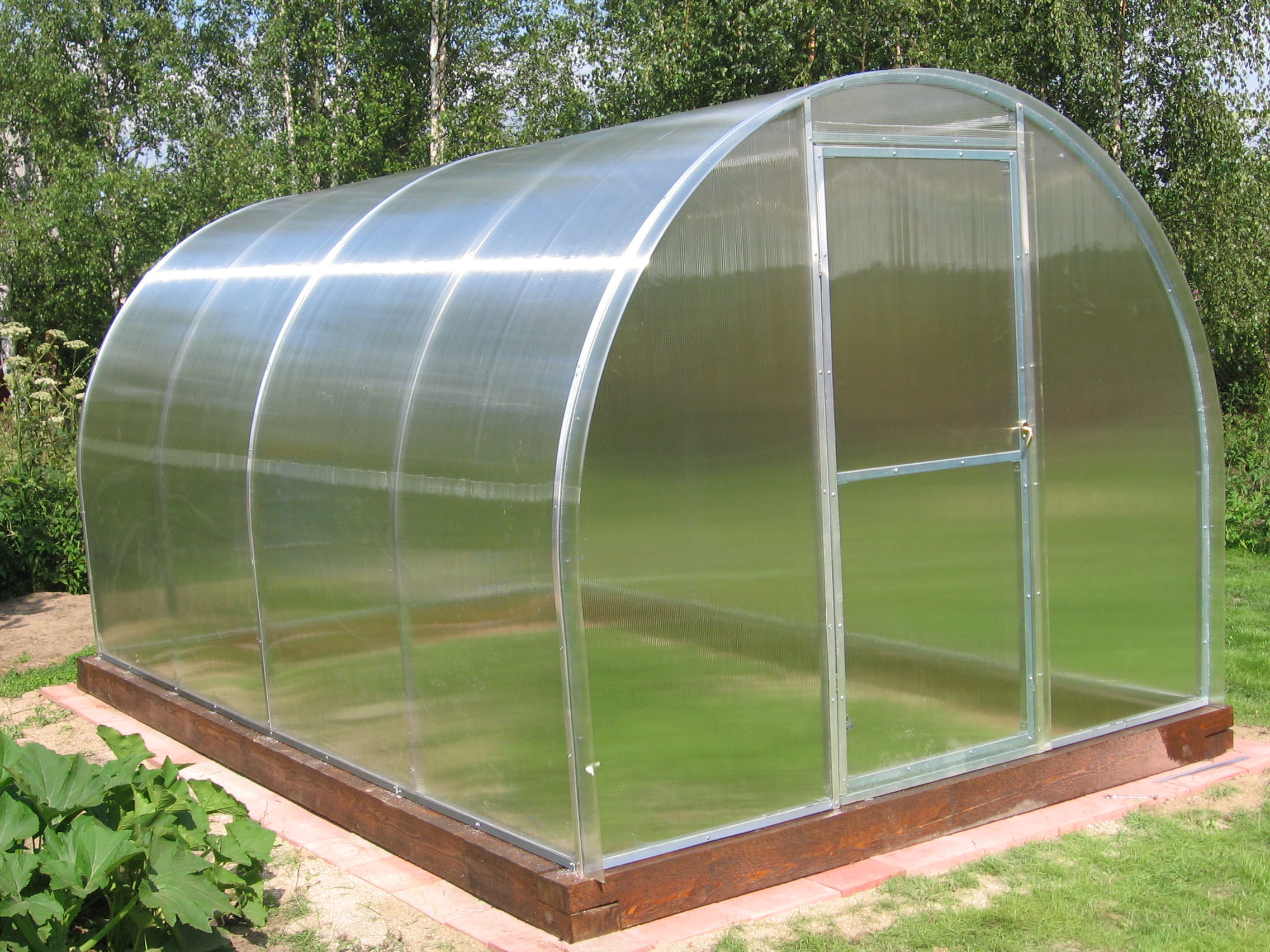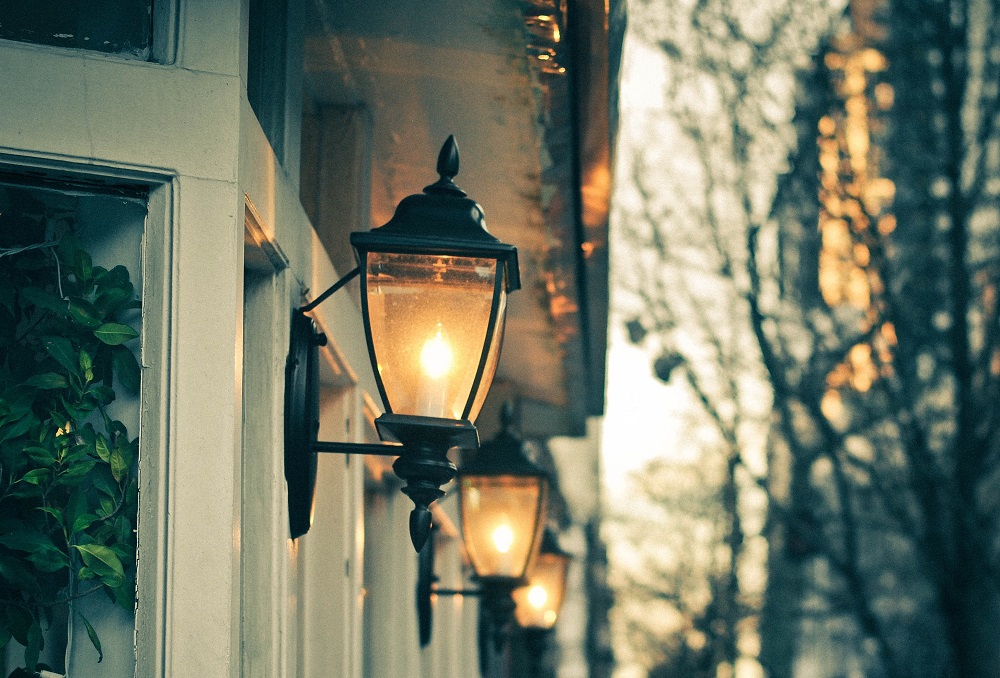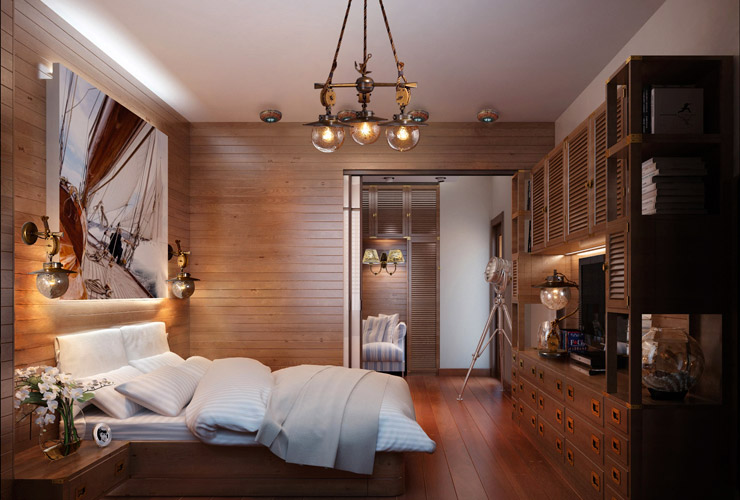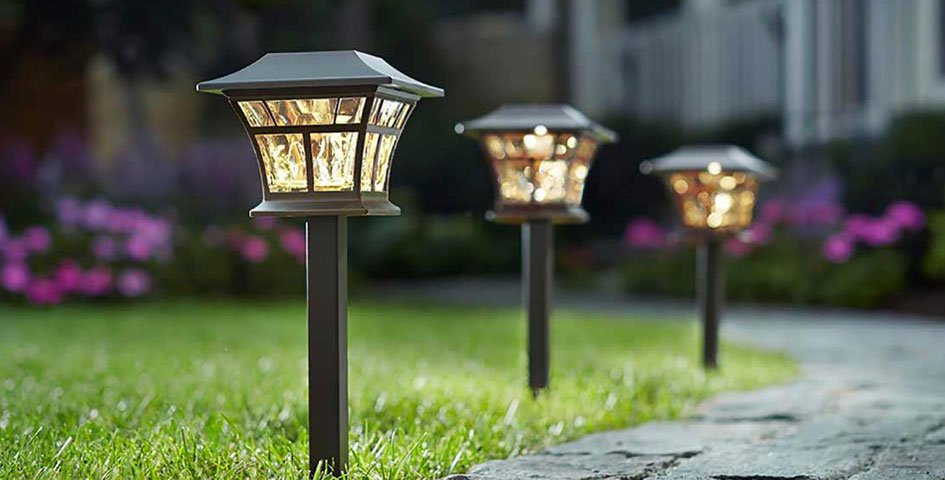Tips and tricks for choosing and installing greenhouse lighting (6 lamp options)
When choosing the location of the greenhouse premises, it is necessary to take into account the illumination of the agricultural section. Gardeners know that the “right” light is of great importance in the development of vegetation and is a guarantee of an excellent harvest. Before installing artificial lighting in greenhouse you should think over everything and make the right choice of fixtures, as well as know the basic requirements for installing electrical appliances.
1. Why are plants light?
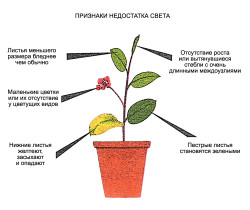 Light is a kind of food for plants, necessary for growth, development, and increase their mass. This is due to photosynthesis, the physiological process of absorption of light energy by green leaves. As a result of this physiological process, oxygen is released into the atmosphere. Photosynthesis activity directly depends on sunlight. Of great importance is the ambient temperature and watering. The determining factor in this matter is the spectral composition of light, as well as the intervals of its absence.
Light is a kind of food for plants, necessary for growth, development, and increase their mass. This is due to photosynthesis, the physiological process of absorption of light energy by green leaves. As a result of this physiological process, oxygen is released into the atmosphere. Photosynthesis activity directly depends on sunlight. Of great importance is the ambient temperature and watering. The determining factor in this matter is the spectral composition of light, as well as the intervals of its absence.
- All plants consume light differently. In addition, their “appetite” changes throughout life. Vegetation can be the so-called "Long day". In this case, the supply of artificial “sun” is increased by electric lighting, and such prolonged lighting improves the growth and flowering of vegetation. This group of flora includes crops such as cabbage, onions, garlic, various root crops. These plants "want" about 12 hours of sun.
- For plants "Short day" a long light supply is more likely to do harm and should be strictly specified time. For these crops, 8-10 hours is enough. This includes cucumbers, tomatoes, bell peppers, eggplant, lettuce, zucchini, and beans. But with the onset of cold weather, there may be problems with a lack of light. For this, additional special lighting is installed in the greenhouses in winter, which will fill the lack of light and have a beneficial effect on the development of crops.
- There is also a group "Neutral plants"for example, a rose - the phases of light and dark do not affect its flowers. However, the growth and height of the culture still depend on the light supply pattern - a special programmed feed schedule is created.
On average, the standards for electric lighting in greenhouses imply that plant crops need to be under the “sun” somewhere 12-16 hours a day. But 6 hours out of 24 plants need a "dream".
2. Types of artificial lighting in greenhouses
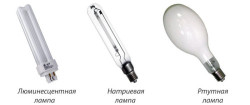 The first light mode includes the operation of electric lamps for vegetation in the required amount of light flux. The light flux density is about 400-1000 mmol / m².
The first light mode includes the operation of electric lamps for vegetation in the required amount of light flux. The light flux density is about 400-1000 mmol / m².
Another way of lighting is supply of light rays periodically. Such illumination is carried out at night, thereby artificially prolonging the day. The use of such illumination can slow down or accelerate the flowering time. The consumption of light energy is much lower - from 5 to 10 mmol / m².
3. Day and night lighting in the greenhouse
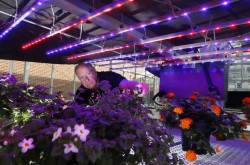 During natural light greenhouse lamps are used, with a density of 400-1000 mmol / m². To extend the night glow, photoperiodic artificial lighting of greenhouses with an energy dose of 5-10 mmol / m2 is practiced.
During natural light greenhouse lamps are used, with a density of 400-1000 mmol / m². To extend the night glow, photoperiodic artificial lighting of greenhouses with an energy dose of 5-10 mmol / m2 is practiced.
When calculating the lighting of a greenhouse, plants with different light requirements are indicated. In greenhouse coverage, this factor is also considered. Designs with an effective integrated method for controlling the processes of flowering and growth of flora are common - cyclic light output. The essence of the work of such a system is a short-term highlighting a regulated period of time.
Even light has a huge impact on cultural development. Numerous fixtures in greenhouses are responsible for this function. Here special reflectors are used with light reflection function. With their help, the same supply of light to plant crops that grow under them is performed.
4. Light ranges, their effect on plants
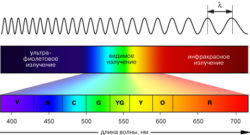 When planning to buy lighting for a greenhouse or a greenhouse, these indicators must also be taken into account:
When planning to buy lighting for a greenhouse or a greenhouse, these indicators must also be taken into account:
- 280-320 nm - a harmful interval for flora;
- 320-400 nm - have regulatory value, only a few percent are needed;
- 400-500 nm - “blue”, needed for regulation and photosynthesis;
- 500-600 nm - “green”, it is considered useful for photosynthesis of lower main dense leaves;
- 600-700 nm - "red", a significant function in photosynthesis, regulation, and plant development;
- 700-750 nm - differently “far red”, in the total light spectrum a few% is enough for regulatory exposure;
- 1200-1600 nm - you can notice an increase in the speed of all biochemical photoreactions.
After building a greenhouse, you need to select the lighting taking into account the above parameters.
The whole point of spectral lighting in polycarbonate greenhouse consists in exposing it to a certain type of radiation at a certain level of cultural development. However, no matter how brilliant this plan is, it also has weaknesses. With such "perfect" lighting, the vegetation is under stress, and as a result, the fruits ripen ahead of schedule. If you look at productivity, then this event, of course, is good, but in terms of quality and taste, such “early” fruits lose to those grown in natural conditions.
5. Features of the choice of lighting in the greenhouse
 To install artificial lighting in a greenhouse wiring installation. First of all, the illumination plan is calculated taking into account the required amount of flow electricity.
To install artificial lighting in a greenhouse wiring installation. First of all, the illumination plan is calculated taking into account the required amount of flow electricity.- The main cable to the greenhouse is held. This is possible in two ways: underground or mounted. Option one - underground wiring is not laid with an ordinary cable, but an expensive wire with a special protective shield is used.
- Then the wiring is carried out in the greenhouse. General safety and improved performance throughout the system require the use of a grounded cable.
- It is important to know that the cross-section of the wire should not be close to one another, a clearance to the side is necessary power increase of about 20%. The biggest cost of electricity is when it is turned on. As a result of this, you need to take the wiring section more.
- Inside the greenhouse, it is advisable to place the wires in a special goffer, which is freely sold on the market.
- The main cable must be connected to the shield, and then do the wiring. Equip visor a switch that will help, if necessary, instantly de-energize the entire power line.
- All work related to wiring is necessary. comply with strict observance of the general fire safety rules. It must be remembered that in greenhouses high humidity. Make all wire connections accurately. It is more expedient to use special terminal blocks, with the help of which a reliable fastening will be provided. Carefully isolate the locations of the wire fasteners.
- To work in a greenhouse, purchase devices that comply with moisture resistance standards.
6. Lamps for lighting the greenhouse
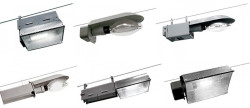 We dwell on the popular lamps for greenhouses, which are freely sold in large quantities. Each individual household buys lighting appliances taking into account the needs of its greenhouse or greenhouse.
We dwell on the popular lamps for greenhouses, which are freely sold in large quantities. Each individual household buys lighting appliances taking into account the needs of its greenhouse or greenhouse.
It is quite possible to make lamps and in general everything DIY lighting for the greenhouse. Keep in mind that such a process will require good preparation, knowledge and experience. When selecting lamps, it is necessary to pay attention to the manufacturer, as well as technical features. It is recommended to give preference to products of reputable brands. It is advisable to have a ballast, with the function of the distribution of light among electric lamps with their on / off control.
If you do not want to bother with the long and rather scrupulous process of arranging the fixtures, then in such cases, ready-made ones are usually used. Electric lamps can be built into the lamp or made as a separate unit. Such a system will provide a uniform flow of light. To make accurate calculations of electric lamps for a particular greenhouse will help consultant. It is important to choose lamps with the appropriate power.
Greenhouse light bulbs
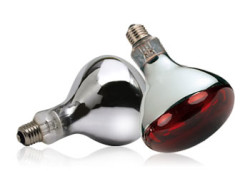 These lamps perfectly illuminate the greenhouse, plus they also warm the air. The main the disadvantage is high electricity consumption. Incandescent lamps have a light spectrum of 600 nm. This is not entirely beneficial for plants, but not critical.
These lamps perfectly illuminate the greenhouse, plus they also warm the air. The main the disadvantage is high electricity consumption. Incandescent lamps have a light spectrum of 600 nm. This is not entirely beneficial for plants, but not critical.
These lamps in excessive quantities "deliver" red, orange, infrared heat radiation. Long-term operation of such a spectrum of light affects the shoots of growing plants, they are intensely lengthened, green mass increases and foliage is deformed. The stems can get burned or overheated.
This lighting in the greenhouse cannot be used for seedlings. Not recommended for fruit plants, such as cucumbers, tomatoes and others.
Incandescent bulbs are great for forcing green plants - onions, parsley. A similar light source is placed at a distance of about 50 cm from the flora. In the absence of sun, additional illumination is performed within 6-18 hours.
Greenhouse high pressure mercury lamps
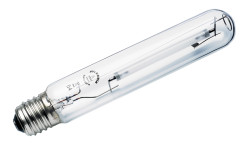 High pressure mercury lamp perfect as a productive lighting in the greenhouse in winter. This light source refers to alternative, its distinctive features are profitability, high efficiency, extensive use and easy installation.
High pressure mercury lamp perfect as a productive lighting in the greenhouse in winter. This light source refers to alternative, its distinctive features are profitability, high efficiency, extensive use and easy installation.
Some luminaire models are specially bought to create artificial lighting greenhouses. Lamps (DRLF) have the beneficial effect of photosynthesis and create optimal air exchange.
Mercury lamps get very hot and are characterized high ultraviolet photo emissionwhich slows down the development of plants. This feature of them is needed when overgrowing seedlings or excessive stretching.
The main disadvantage of such lamps- this is the presence of mercury, so it is imperative that all the rules for handling and storage with it are mandatory. Disposal of this lamp is a difficult issue. It is strictly forbidden to throw the lamp into the trash container. You also need to know that with mechanical damage, or if the lamp is broken, it will be almost impossible to collect all the mercury, because of this you will have to get rid of the vegetation and all objects that could get the substance.
Greenhouse fluorescent lamps
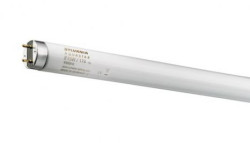 The light source is characterized by a set of positive qualities:low cost, practicality, durability and perfectly copes with the tasks assigned to it.
The light source is characterized by a set of positive qualities:low cost, practicality, durability and perfectly copes with the tasks assigned to it.
To the main impressive dimensions are negative such designs and at the same time low light output. The brightness of the lamp is completely dependent on the applied voltage.With its lack - the lamp may not turn on.
Competition for profitability created energy saving lights. Installation of conventional fluorescent lamps is a little complicated and is carried out using additional equipment: in some cases, installation is carried out horizontally with rectangular fittings, in others - vertically using special enclosures, this depends on the needs of cultivated green "residents". This type of lamp will be acceptable to owners small greenhouses and greenhouses.
High pressure sodium lamps for greenhouses
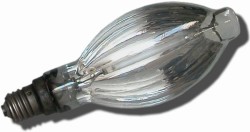 Pretty economical backlight option. The luminaires are characterized by high light output with a consumption of 400 watts. When illuminating the greenhouse, a monochromatic light field is formed, with a yellow-orange flow. Special sodium lamps are most suitable for large industrial greenhouses. In addition to saving energy, lamps are famous for their long service life.
Pretty economical backlight option. The luminaires are characterized by high light output with a consumption of 400 watts. When illuminating the greenhouse, a monochromatic light field is formed, with a yellow-orange flow. Special sodium lamps are most suitable for large industrial greenhouses. In addition to saving energy, lamps are famous for their long service life.
Light spectrum of lamps very similar to natural sunlight and it has a fruitful effect on greenhouse plants. At the same time, electric lamps are weak in the blue spectrum, which is of great importance in the vegetative growth of green crops.
Mirror sodium lamps released specifically for the greenhouse environment. The mirror surface reflects light and this leads to an increase in efficiency, and a rotating base distributes the light flux correctly. Sodium lamps are regulated using a ballast.
This lamp is quite simple to install. Its installation is carried out by connecting the ballast. Then the lamp turns on, and the light rays are directed in the desired direction. To perform lighting in the greenhouse, you should correctly choose a ballast, pulse ignition device.
However, this type of connection can be attributed to the disadvantages. When connecting, it is necessary to have some elements in the circuit - IZU, as well as a ballast, this may be the only obstacle in creating the lighting of the greenhouse with your own hands.
Metal halide lamps for greenhouses
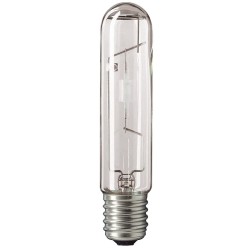 Equipped with a fairly wide range of light and adjustable power range. Powerful lamps are popular in lighting greenhouses and are considered optimal for them. The radiation of the lamps is as close as possible to natural sunlight.
Equipped with a fairly wide range of light and adjustable power range. Powerful lamps are popular in lighting greenhouses and are considered optimal for them. The radiation of the lamps is as close as possible to natural sunlight.
Using such a light source, plants are guaranteed to receive good nutrition and development. Lighting devices of this type are distinguished by their fragility and considerable cost. Often there are restrictions associated with the position of the combustion - this causes the inconvenience of their operation.
The selection and installation of photo sources in the greenhouse is due to many indicators: the "appetite" of the plants grown, the area of the greenhouse or greenhouse, and the climatic zone. A wide range of possible lighting devices and their competent operation will allow you to organize optimal conditions for all types of plants.
LED greenhouse lamps
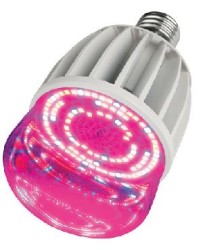 Greenhouse lighting LED lights considered especially sensitive among analogues. The main advantage of this backlight is the ability illuminate plants with a specific type of luminous flux - red or blue, as well as adjust to the necessary spectrum depending on the conditions and combine the light. Such LED illumination of the greenhouse allows amplification or attenuation of the number of light rays of different lengths.
Greenhouse lighting LED lights considered especially sensitive among analogues. The main advantage of this backlight is the ability illuminate plants with a specific type of luminous flux - red or blue, as well as adjust to the necessary spectrum depending on the conditions and combine the light. Such LED illumination of the greenhouse allows amplification or attenuation of the number of light rays of different lengths.
LEDs give a lot of light at a fairly low voltage and are available for all available types of socles. You can buy ready-made LED devices, consisting of a lamp with a rugged housing pre-created for it and a driver.
LED light bulbs famous for their resistance to various mechanical defects, durability and economy concerning the spent electric energy. The operating time of the lamp is approximately 3000-5000 hours, then it is completely replaced.
Installation of LED lights and electric lamps are carried out in the traditional way - in linear systems that are installed using a flexible cable. This allows you to adjust the orientation and height of the luminaires at the right time.
The only negative thing about LED lights is fairly high cost. It is recommended to buy lamps not of Chinese assembly, but phyto-lamps of domestic production, because the radiation spectrum in these devices is already tuned to our latitudes. Using LED devices in industrial greenhouses, less chemicals are used that affect plant growth.
7. What else to consider when lighting a greenhouse?
There are several important points that you need to know and consider when creating lighting in a greenhouse:
 Green vegetation picks up light whose waves have a length of 400-700 nm. It should be understood that infrared and ultraviolet radiation also affects the growth of crops in the greenhouse.
Green vegetation picks up light whose waves have a length of 400-700 nm. It should be understood that infrared and ultraviolet radiation also affects the growth of crops in the greenhouse.- Allocate two types of backlight: photoperiodic and constant illumination. Their use is due to the crops that are grown.
- High pressure sodium light bulbs are not the most ideal light source in a greenhouse or greenhouse. Choose different lighting devices, taking into account the type of plants grown.
- No need to save on high-quality light, because decent equipment is the key to creating the best greenhouse conditions, as well as uniform lighting of vegetation.
- When installing fixtures, you must adhere to all safety rules, as well as comply with labor protection standards.
- The lighting for the greenhouse is used in fact the same as the lighting for greenhouse rooms. Do not ignore the quality of lighting devices - you will be provided with a large crop.

